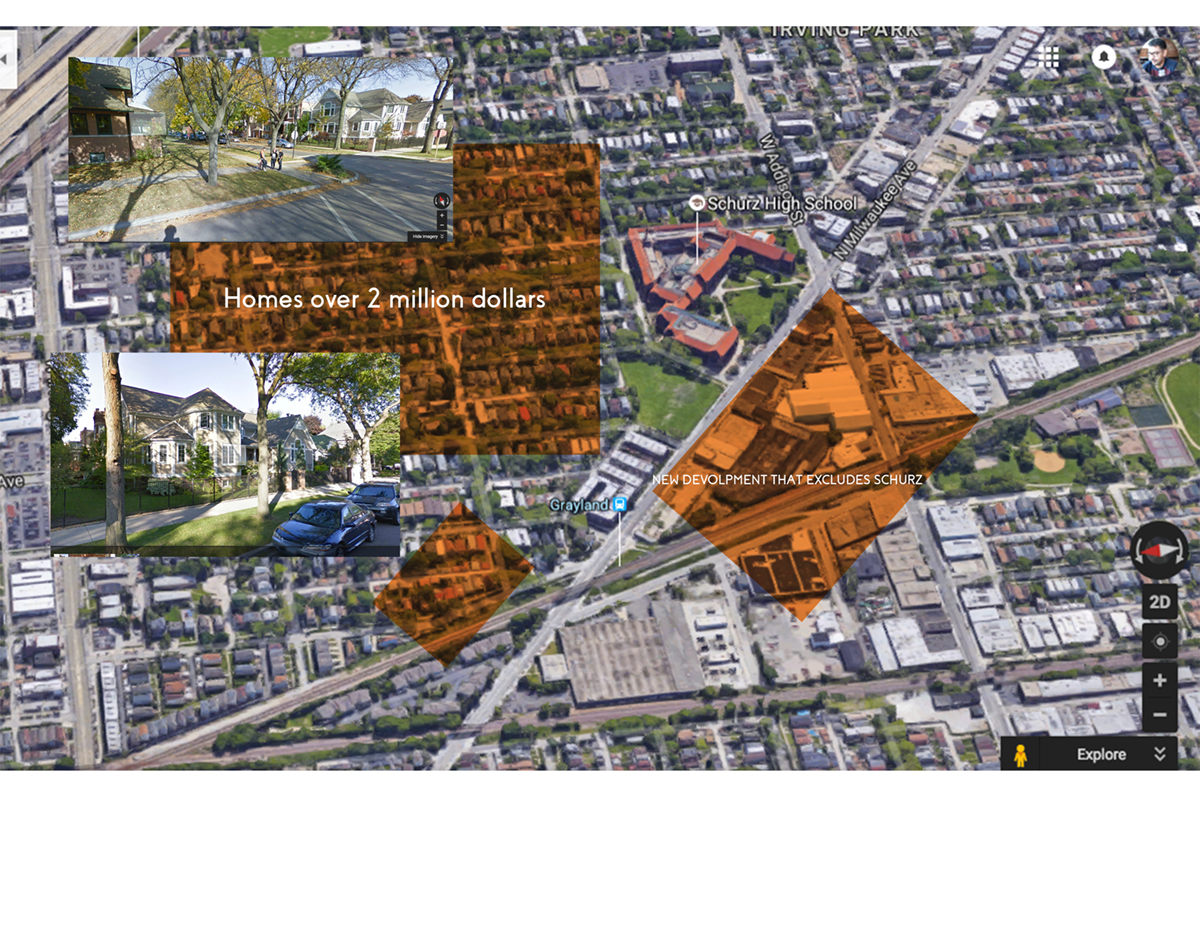Recognition and Presence
By Aaron Arreguin
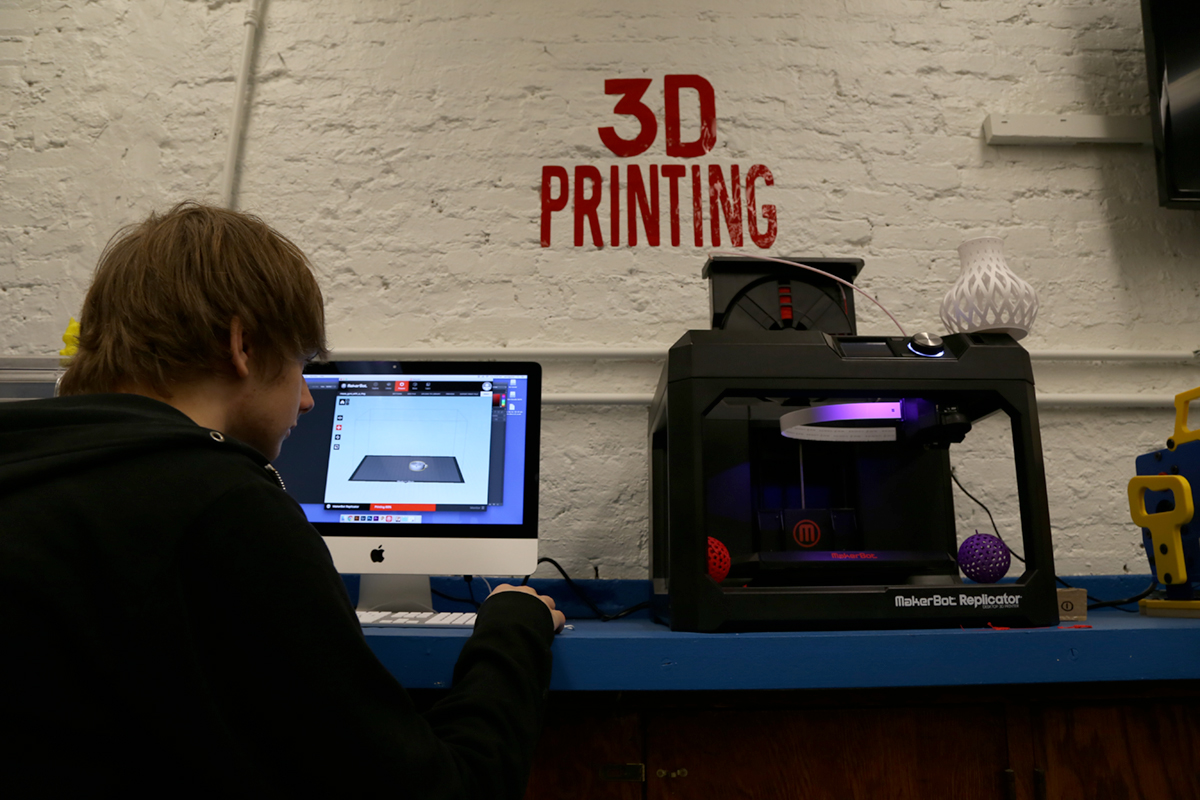
Junior Year digital media students expressed a feeling of disconnection from the Old Irving Park neighborhood surrounding Schurz High School. They wondered how they might build bridges between the students of Schurz, the residents, and the businesses in the neighborhood. Students actively explored their neighborhood through immersive photo documentation. The students then identified access to physical spaces, including homes, businesses, and the school, as a platform for bridging connections among community members. Students decided to host open house events at the high school as a vehicle for sharing and exchange, inviting residents to visit for artmaking activities, school tours, and conversation.
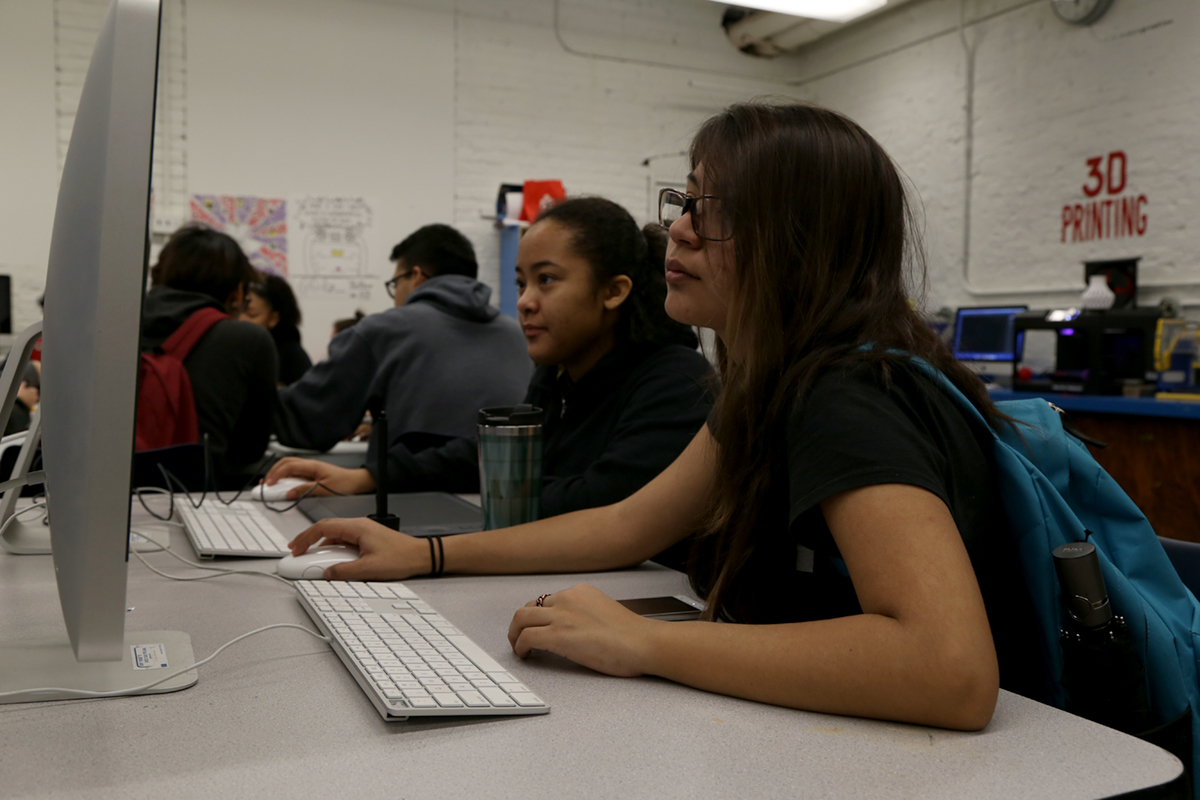
Goals and Objectives
- Students will build connections between themselves and the neighborhood community.
- Students will create a community space where residents and students can interact and share.
- Students will develop relationships that encourage their community to invest in the high school emotionally, physically, and financially.
Guiding Questions
- How can we create a bridge between the school and the community?
- Why do we perceive a sense of tension between the school and the neighborhood?
- How can we use photography and design practices to break down barriers among all community members in the neighborhood?

Documentation + Assessment
- Students photographed the neighborhood. These photographs served as both documentation of their exploration of the community and art objects.
- Students assessed their understanding of their community through reflective discussions on their efforts to bridge connections with neighborhood residents.
Learning Activities
Step 1
Listen
Engage students in discussion about their relationships with one another, their school, and their community. Notice the feeling of disconnection between the school and the neighborhood expressed by students, and propose investigating these ideas further by exploring the neighborhood through photography.
Step 2
Establish Photography and Design Basics
Look at examples of contemporary artists who focus on place/landscape. Guide students in discussion of compelling imagery and define fundamental terms of photography (framing, closeups, medium shots, extreme closeups, lighting).
Step 3
Neighborhood Walks
Students collectively design a visual scavenger hunt and define a list of photographs to capture within the neighborhood. Teacher emphasizes fully capturing a space from a single position: stay in one spot and take at least 20 different photographs from slightly different perspectives.
Step 4
Visually Capturing the Neighborhood
Students upload photographs from Step 3 to Google Drive. Students stitch photos together for each location photographed to create an immersive view of the landscape [what software did you use?]. Teacher guides students in learning the fundamentals of photo editing (lighting, dodging, color matching, etc.).
Step 5
Developing the Essential Inquiry
Students discuss the completed photographs while teacher focuses attention on common themes, such as the lack of connection students felt between themselves and the places they photographed. Teacher focuses attention on the physical divisions created by buildings, as evidenced in the photographs, and poses the guiding question: How can we create a bridge between the school and the community?
Step 6
Building Bridges
Students decide to host open houses to bring the community members into the school and begin a shared exchange of ideas. Students design flyers to advertise open house events, post them in local businesses, and distribute them door to door. Students develop hands-on artmaking activities for the community, designed to mirror the skills and concepts they are learning in class.
Step 7
Bringing the Community into the School
Students create maker stations where they teach visiting community members art skills, including button-making, 3D printing, and sketchbook construction. Following the making activities, art students act as tour guides within the school, speaking about the building and their own experiences as students.
Step 8
Bringing the School Back into the Community
Visitors take objects they made as a parting gift, along with the memory of a shared experience with the students in the school. Future possibilities include a community membership for the maker space and a regular schedule of shared art activities in the school.
Step 9
Reflect and Assess
Teacher guides student reflection on the experience though large group discussions prompts. Students reveal their willingness to undertake leadership roles and educate themselves about issues in their immediate community. They share ideas on how to extend this interest across the city, state, and even the country.
Step 10
Next Steps: Proposals for the Neighborhood
Using the “Chicago 50 x 50 Neighborhood Arts Project,” which calls for proposals for public art projects in each of Chicago’ 50 wards, as a model, students create proposals for visual signage in the neighborhood that feature both positive messages and critical questions to spark dialogue.
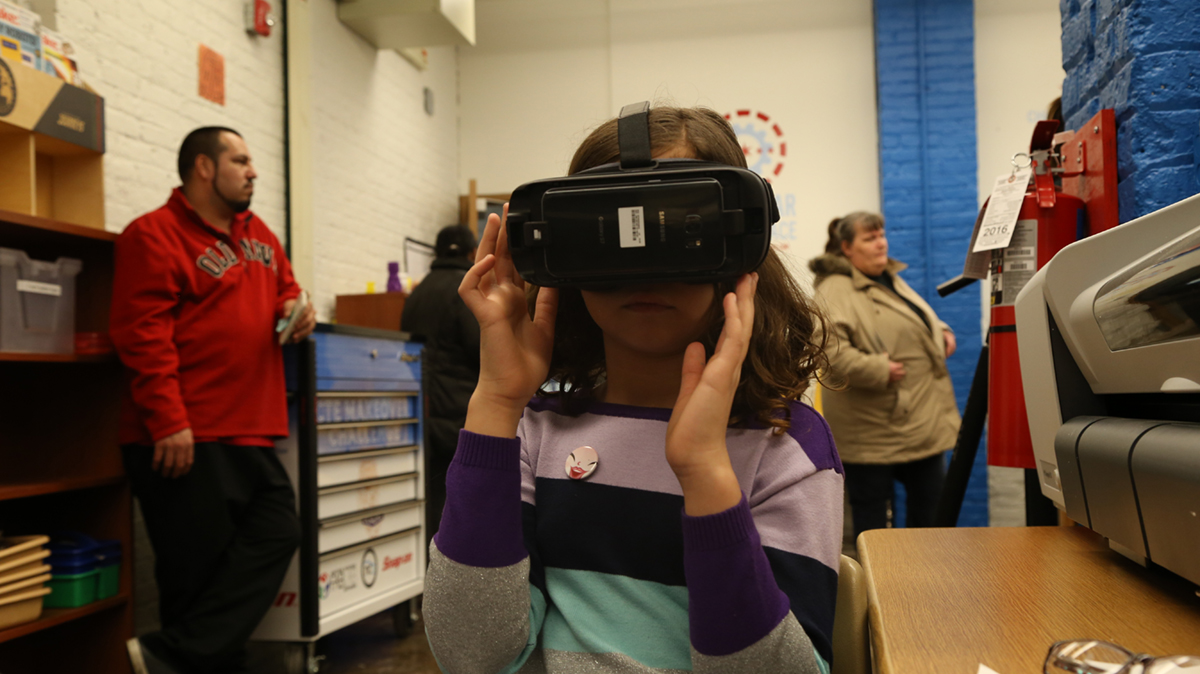
MCA Connections
The MCA pushes me to think about how I can make my curriculum far more community focused. When I took my students on a field trip at the MCA, dialogue with the Artist Guides about the artwork in the museum opened up conversations about what contemporary art can be.
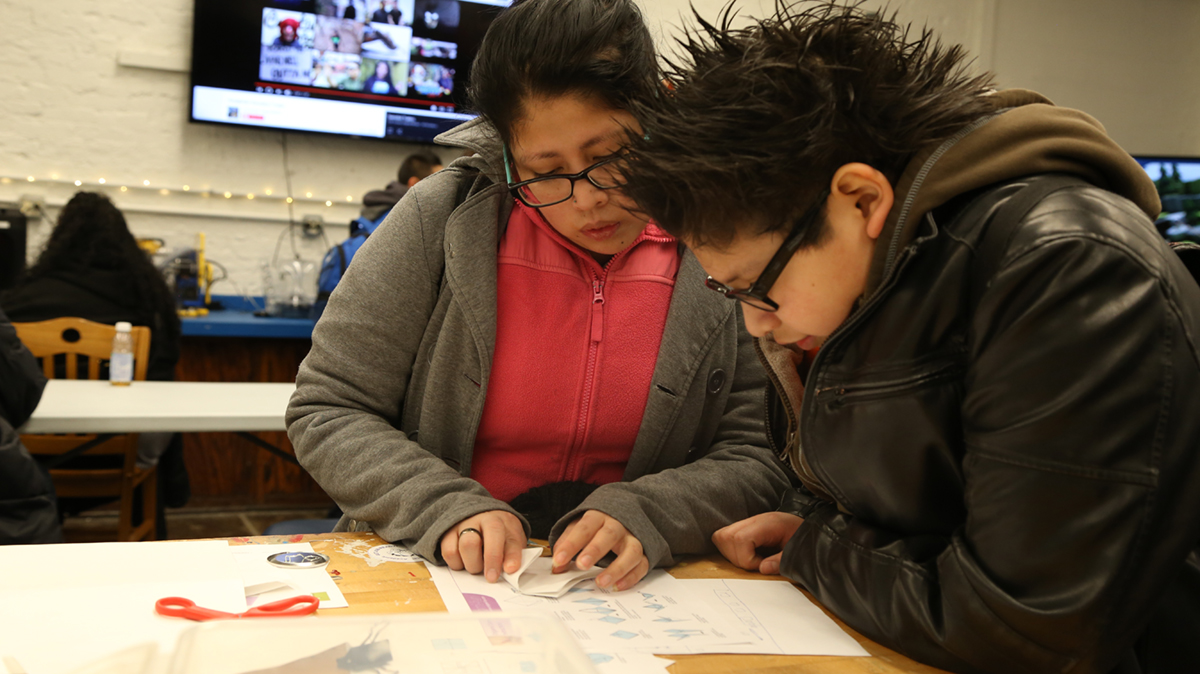
Aaron Arreguin
Schurz High School
Aaron Arreguin is a filmmaker, photographer and art educator whose mission is to use contemporary film and art practices to develop alternative forms of documentation. He has been a faculty member of Spiral Workshop at the University of Illinois at Chicago and served as an instructor for after-school programs and community based organizations. Additionally, Aaron plans to open a pizzeria in the future: A cheese only pizzeria called 'Ma-cheese-mo.' Aaron currently works for Chicago Public Schools as lead Digital Media instructor at Carl Schurz High School.
Aaron reflects on his process:
I learned that I don’t have to do all the work — students can take ownership and lead the way! Allowing students to shape the direction of the project also allowed them to take on leadership positions within this class and within the school. They developed a sense of ownership of their learning, were more willing to educate themselves about new issues, and became excited to research and explore burning questions that emerged from their investigations.
Being part of the Teacher Institute, I always have the MCA in mind as a resource to draw from, and the program gave me the creative freedom to do my work with the support and influence of the museum. The experience helped push me to make my work more engaging, student centered, and authentic to the students’ interests and to the community.
